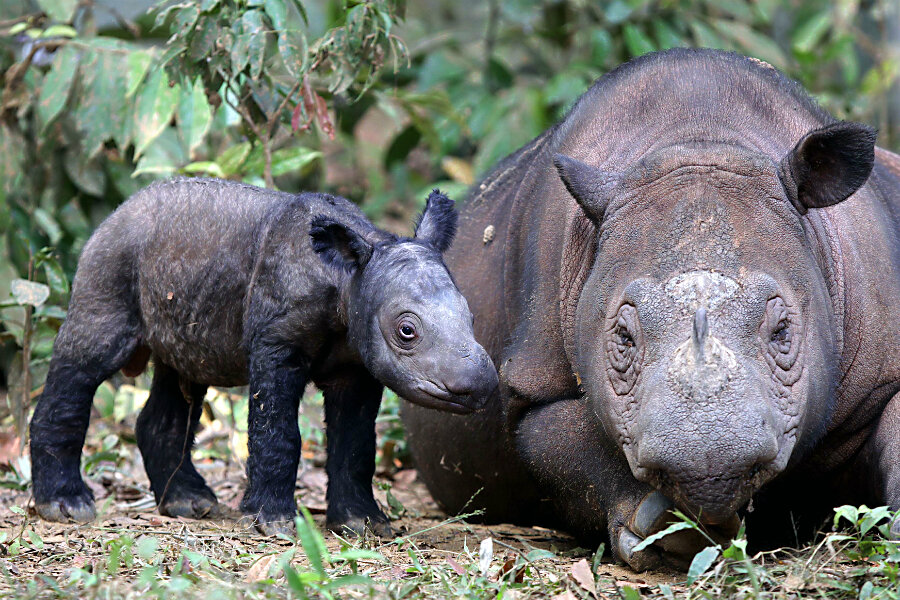Sumatran rhino extinct in Malaysia: How can the species survive?
Loading...
The critically endangered Sumatran rhinoceros is now extinct in the wild in Malaysia, say experts in the field of rhino conservation.
In fact, researchers could find no signs of the wild Sumatran rhinoceros in Malaysia since 2007, according to a paper published in the journal Oryx.
Sumatran rhinos were once abundant across much of Southeast Asia, but now their number has plummeted to about 100 left in the wild in Indonesia and nine others in captivity, say experts.
"It is vital for the survival of the species that all remaining Sumatran rhinos are viewed as a metapopulation, meaning that all are managed in a single program across national and international borders in order to maximize overall birth rate," says lead author Rasmus Gren Havmøller from the Natural History Museum of Denmark in a press release.
"This includes the individuals currently held in captivity."
Experts have proposed relocating the surviving Sumatran rhinos to "intensive management zones" with increased protection against poaching, in hopes of increasing the pool of mating partners and thus growing the population.
Although many people believe rhinoceroses exist only in Africa, three of the five living species – the Indian, Javan, and Sumatran rhinos – are native to Asia, reports Newsweek.
Worldwide, all rhino species are under threat of total extinction. To fight this, conservation groups have implemented various strategies, ranging from developing advanced reproduction techniques to military interventions.
After a 31-year-old northern white rhino died last month, living only four of its species in the world, her potentially healthy ovary was immediately removed and taken to a specialized laboratory in Italy for scientific research and reproduction work.
The only remaining male of the species lives in Ol Pejeta Conservancy in Kenya, under 24-hour armed guard. His horn has already been removed to deter poachers.
Conservationists hope to crossbreed the female's harvested eggs with a southern white rhinoceros, the closest living relative to the rare northern whites, and produce a baby rhino via in-vitro fertilization (IVF) and surrogacy.
Other conservation efforts focus on the economics of the ivory trade: A biotech company in Seattle is 3D-printing fake rhino horns in hopes of flooding the market with printed horns that cost a fraction of the price of real horns.
Another anti-poaching strategy is implanting a device – on the animal – that uses a blend of heart rate sensors, GPS tags, and cameras drilled into one of the rhino's horns to warn conservationists when a rhino is under threat.
And when all else fails, run away. In South Africa, a conservation group is relocating black rhinos to a national park 3,000 miles away, in Chad. South Africa has seen a huge surge in poaching to meet the demand for illegal rhino horn, mainly from Asia.
But conservationists still haven't given up hope for the highly endangered creatures.
"The tiger in India was saved from extinction due to the direct intervention of Mrs. Gandhi, the then prime minister, who set up Project Tiger," says Christy Williams, a study co-author and the coordinator of the WWF Asian and Rhino and Elephant Action Strategy. "A similar high level intervention by President Joko Widodo of Indonesia could help pull the Sumatran rhinos back from the brink."





